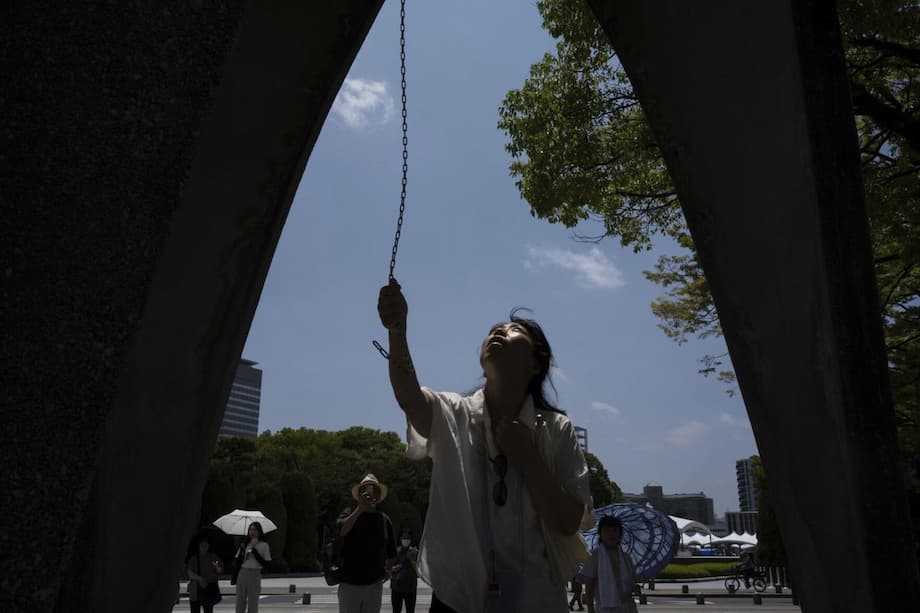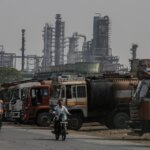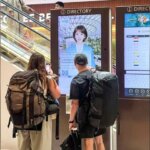Hiroshima’s 80th Anniversary: A Somber Reflection Amid Rising Nuclear Tensions
On August 6, 2025, the world paused to mark the 80th anniversary of the atomic bombing of Hiroshima—a moment that forever altered the course of history. As dignitaries, survivors, and representatives from over 120 countries gathered at Hiroshima’s Peace Memorial Park, the commemoration was not only a tribute to the victims but also a stark warning: the threat of nuclear weapons is more acute today than at any time since the end of the Cold War.
- Hiroshima’s 80th Anniversary: A Somber Reflection Amid Rising Nuclear Tensions
- Remembering Hiroshima and Nagasaki: The Human Cost
- Global Commemoration and Calls for Disarmament
- Renewed Nuclear Threats: A World on Edge
- The Modern Nuclear Arsenal: Bigger, Deadlier, and Growing
- The Hibakusha: Bearing Witness, Passing the Flame
- Lessons from Hiroshima: The Path Forward
- In Summary
The ceremony, attended by Japanese Prime Minister Shigeru Ishiba, Hiroshima Mayor Kazumi Matsui, and United Nations representatives, unfolded with solemn rituals. A minute of silence was observed at 8:15 a.m., the exact moment the bomb detonated over the city in 1945. White doves—symbols of peace—were released, and survivors, known as hibakusha, shared their stories, determined to pass on their memories as their numbers dwindle with age.
Remembering Hiroshima and Nagasaki: The Human Cost
The atomic bomb dropped on Hiroshima, codenamed “Little Boy,” instantly killed an estimated 78,000 people. By the end of 1945, the death toll had risen to 140,000 due to burns, injuries, and radiation sickness. Three days later, a second bomb devastated Nagasaki, killing another 70,000. Japan’s surrender on August 15 ended World War II, but the legacy of the bombings has endured for generations.
Survivors have long recounted the horrors of that day: the blinding flash, the searing heat, and the devastation that followed. Many, like Minoru Suzuto, now 94, feel a pressing urgency to share their experiences. “There will be nobody left to pass on this sad and painful experience in 10 or 20 years,” Suzuto said after praying at the cenotaph. “That is why I want to share as much as I can.”
Hibakusha have faced not only physical and psychological trauma but also social stigma. Rumors of disease and genetic effects led to discrimination, and many survivors struggled for recognition and compensation. Today, fewer than 100,000 hibakusha remain, with an average age exceeding 86. Their voices, once central to the global anti-nuclear movement, are fading, making this anniversary a poignant milestone.
Global Commemoration and Calls for Disarmament
This year’s ceremony drew a record number of international delegates, reflecting the enduring global resonance of Hiroshima’s tragedy. Schoolchildren read statements of hope, and the names of nearly 5,000 survivors who died in the past year were added to the registry, bringing the total number of deaths attributed to the bombing to almost 350,000.
Hiroshima Mayor Kazumi Matsui used the occasion to issue a powerful plea: “Among the world’s political leaders, there is a growing belief that possessing nuclear weapons is unavoidable in order to protect their own countries,” he said. “This situation not only nullifies the lessons the international community has learned from the tragic history of the past, but also seriously undermines the frameworks that have been built for peace-building.”
Matsui urged all leaders to visit Hiroshima and witness the reality of atomic warfare. He also called on Japan’s government to sign and ratify the Treaty on the Prohibition of Nuclear Weapons (TPNW), a request echoed by many survivors and activists. However, Prime Minister Ishiba reiterated Japan’s reliance on the U.S. nuclear umbrella, arguing that deterrence is necessary given the regional security environment.
International Perspectives and Protest
The anniversary was marked not only by official ceremonies but also by public protest. Near the iconic Atomic Bomb Dome, over 200 demonstrators gathered, holding signs reading “No Nuke,” “Stop War,” and “Free Gaza! No more genocide.” Their chants underscored the frustration of many who see current policies as a betrayal of Hiroshima’s legacy.
United Nations Secretary General Antonio Guterres, in a statement read at the ceremony, emphasized the importance of remembering the past to build a peaceful future. Pope Leo XIV, speaking from the Vatican, called the bombing a universal warning against the devastation of war and nuclear weapons.
Renewed Nuclear Threats: A World on Edge
While Hiroshima and Nagasaki remain the only instances of nuclear weapons used in war, the specter of nuclear conflict has returned to the forefront of global consciousness. Experts warn that the planet is closer to seeing nuclear weapons used again than it has been in decades.
Recent years have seen a series of alarming developments:
- Russia’s invasion of Ukraine has been accompanied by nuclear saber-rattling, with both Moscow and Washington issuing veiled threats.
- The United States has conducted strikes on Iranian nuclear facilities to curb Tehran’s nuclear ambitions.
- India and Pakistan, both nuclear-armed, engaged in a brief but tense conflict over Kashmir earlier this year, raising fears of escalation.
- North Korea continues to expand its arsenal, with Kim Yo Jong declaring that Pyongyang will not relinquish its nuclear status for talks.
Hans Kristensen, a senior fellow at the Stockholm International Peace Research Institute (SIPRI), summarized the trend:
“We see a clear trend of growing nuclear arsenals, sharpened nuclear rhetoric, and the abandonment of arms control agreements.”
The Bulletin of the Atomic Scientists moved its symbolic “Doomsday Clock” to 89 seconds to midnight in 2025, the closest it has ever been to global catastrophe. The group cited not only nuclear threats but also climate change, pandemics, and disruptive technologies as existential risks. Yet, nuclear weapons remain central to their warning.
The Modern Nuclear Arsenal: Bigger, Deadlier, and Growing
Today, nine countries possess more than 12,000 nuclear weapons: the United States, Russia, China, France, the United Kingdom, India, Pakistan, North Korea, and Israel. The U.S. and Russia together hold about 90% of the world’s stockpile, but other nations are rapidly modernizing and expanding their arsenals.
China is adding approximately 100 warheads per year, while India and the UK are also increasing their stockpiles. Nearly all nuclear-armed states are investing heavily in new delivery systems and warhead upgrades. The Hiroshima bomb, with a yield of 15 kilotons, is now considered “low-yield”—the largest U.S. weapon is 1.2 megatons, more than 80 times more powerful. A single modern bomb could kill millions instantly if detonated over a major city.
The Doomsday Clock report warns:
“The countries that possess nuclear weapons are increasing the size and role of their arsenals, investing hundreds of billions of dollars in weapons that can destroy civilization.”
Debate Over Deterrence and Disarmament
The paradox of commemorating Hiroshima while nuclear arsenals grow is not lost on observers. An opinion piece in The Independent questioned whether the tragedy is being honored or overshadowed by current policies. The debate centers on whether nuclear weapons provide security through deterrence or perpetuate the risk of annihilation.
Japan, despite its stated commitment to nuclear disarmament, has not signed the TPNW, citing its reliance on the U.S. nuclear umbrella. Prime Minister Ishiba argued that Japan’s security environment—surrounded by nuclear-armed neighbors—necessitates deterrence. Survivors and activists, however, see this as a hollow promise, pointing to the lack of compensation for civilian victims and the government’s reluctance to fully embrace disarmament.
The Hibakusha: Bearing Witness, Passing the Flame
As the number of hibakusha dwindles, their role as living witnesses becomes ever more vital. Hamasumi Jiro, one of Hiroshima’s youngest survivors and secretary general of Nihon Hidankyo, spoke at the United Nations about the humanitarian cost of nuclear weapons. Born in utero when his mother was exposed to the bomb, Hamasumi lost his father in the blast. He reflected on the disproportionate impact of nuclear weapons on women and children, and the lifelong suffering endured by survivors.
Hamasumi and other hibakusha have championed the Treaty on the Prohibition of Nuclear Weapons, which entered into force in 2021 with the support of 122 countries. Yet, none of the world’s nuclear-armed states or their allies have joined the treaty. Hamasumi likens the sharing of hibakusha stories to passing a flame from one lamp to the next, ensuring that the memory—and the warning—endures.
“For people to fulfill their dreams and cherish their lives, there must be peace. I want to say to the world, please listen to hibakusha so that we can achieve a world without war and free of nuclear weapons.” — Hamasumi Jiro
Survivors continue to seek acknowledgment and compensation for civilian victims, as well as recognition of responsibility from the U.S. government for the bombings. Their advocacy is now joined by younger generations, who are urged to carry forward the message of peace.
Lessons from Hiroshima: The Path Forward
The 80th anniversary of Hiroshima is a moment to reflect on the catastrophic consequences of nuclear war and the urgent need for disarmament. The ceremony’s rituals—flowers, silence, doves—are powerful symbols, but the real challenge lies in translating remembrance into action.
As global tensions rise and nuclear arsenals grow, the lessons of Hiroshima risk being forgotten. The survivors’ message is clear: the world cannot afford to repeat the mistakes of the past. The path to peace requires not only honoring the victims but also confronting the realities of current nuclear policies and working toward a world free of nuclear weapons.
In Summary
- The 80th anniversary of Hiroshima’s atomic bombing was marked by solemn ceremonies and renewed calls for nuclear disarmament.
- Survivors (hibakusha) emphasized the urgency of sharing their stories as their numbers decline.
- Global leaders, including Japan’s Prime Minister, expressed support for a nuclear-free world, but Japan remains under the U.S. nuclear umbrella and has not signed the Treaty on the Prohibition of Nuclear Weapons.
- Experts warn that the risk of nuclear conflict is higher now than at any time since the Cold War, with growing arsenals and heightened geopolitical tensions.
- The Doomsday Clock stands at 89 seconds to midnight, reflecting the extreme danger posed by nuclear weapons and other existential threats.
- Hibakusha and activists urge the world to remember Hiroshima’s lessons and work toward the abolition of nuclear weapons.












